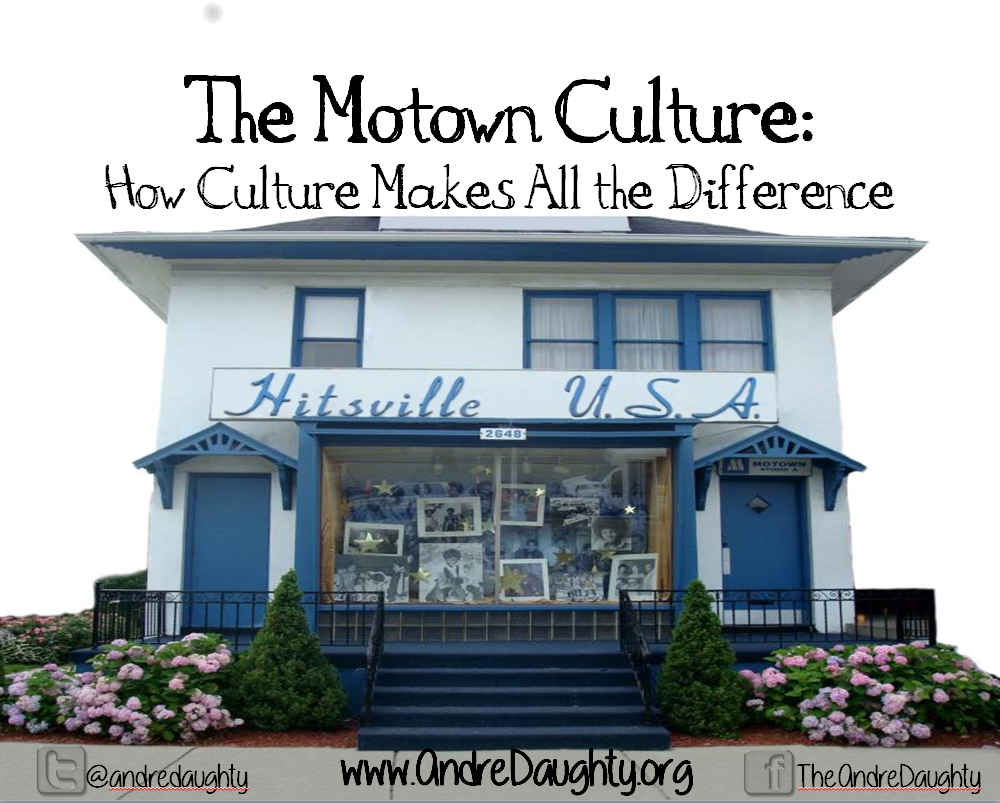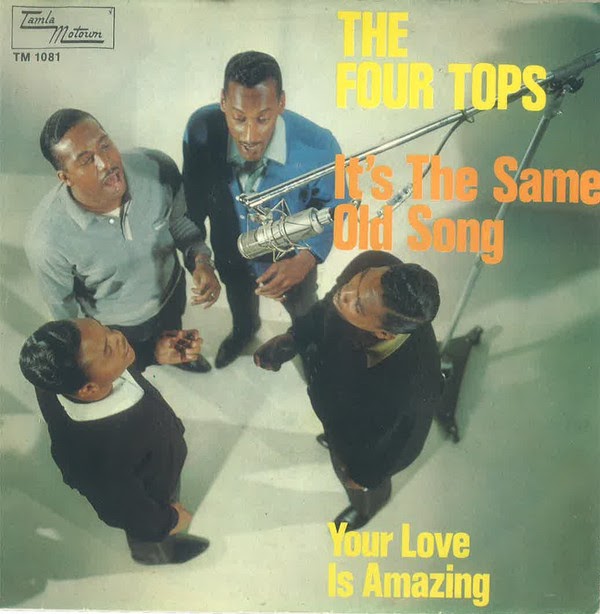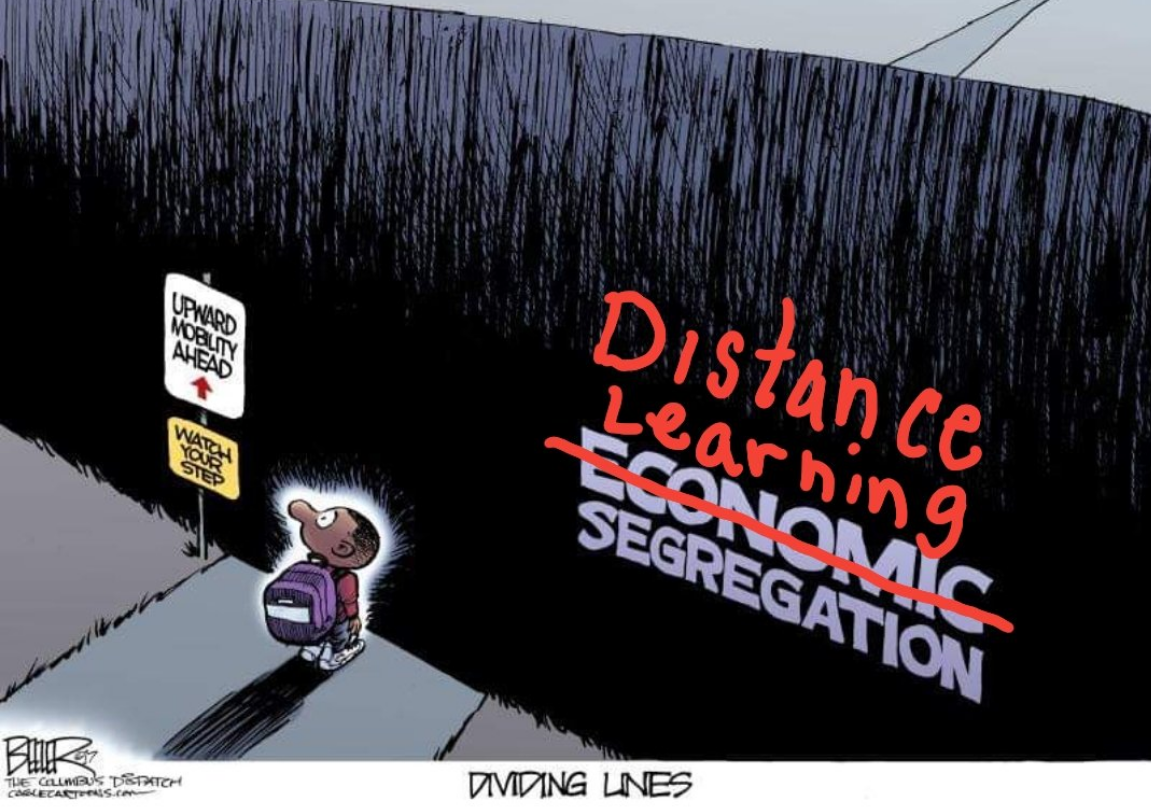It’s The Same Old Song
Dec 14, 2020 by Andre Daughty

If you know Andre Daughty, you know I love all things Motown Records. I didn’t necessarily grow up listening to every work of art from the Detroit era, but I did learn about the rise of Berry Gordy and became fascinated how a Black man in the 1950s grew a record company during a 
time when Blacks weren’t welcomed nor accepted by the mainstream. I loved how Berry would find talent from all over Detroit to help shift the narrative of the musical scene. He often would tell everyone, “I’m gonna start my own record label and we’re not just gonna make BLACK music. We’re gonna make music that EVERYBODY can enjoy!”
Since then, I’ve read at least fifteen books and studied the culture of success in Motown as well as the fall of it. Those lessons transfer to educational leadership rather easily. One of Motown’s greatest groups was the Four Tops. One of their most famous songs was entitled, “The Same Old Song.” The chorus read:

Now it’s the same old song
But with a different meaning
Since you been gone
It’s the same old song
But with a different meaning
Since you been gone
The world is shifting to online and distance learning throughout this pandemic. The more I read online posts, tweets and articles about distance learning and its new normal and innovative shift in education, I can’t help but to replay the lyrics of that song.
You see, this isn’t a new normal. Before the pandemic, equity issues were the key reason for widening gaps in education. Those gaps are still present for the disadvantaged. Here are some things to consider when planning the best routes to close the gap and not have the same old song:
Concern:
Although students love technology and watch more content on devices versus watching television, every student may not have a strong wifi signal and bandwidth to stream lessons or have 1:1 meetings without interference and buffering.
How to Address It:
Some teachers do not know the online software platforms well enough to use it successfully while teaching.
How to Address It:
Concern:
Teachers try to justify grading work when students don’t have the equal amount of resources from which to pull. One educator gave an assignment to reach out to medical communities about Covid-19 and do a Venn diagram comparing it to Swine Flu and the Flu. Several students did not know anyone in their family/friend circles within the medical community, nor had access to the medical community. Others had parents who were doctors and nurses.
How to Address It
How can our special education educators stay in compliance with students on IEPs?
How to Address It
How will teachers justify which students should be recommended for retention? One teacher stated online, “Since Johnny had a 68.5 before school closed, Johnny should fail that class.” She called it tough love. I called it ignorant and unfortunate. The purpose of education isn’t to fail students. Jonathan Cohen, co-founder and president of the National School Climate Center stated, “… the purpose of education is to support children in developing the skills, the knowledge, and the dispositions that will allow them to be responsible, contributing members of their community.” Retaining students just to be considered giving tough love is unfortunate and near-sighted.
How to Address It
Adults are expecting students to adjust without understanding how it is affecting their livelihood. One student shared that online learning would be difficult because his guardian’s job was deemed important. He had to watch over his six brothers, one sister and two cousins while his aunts, uncles and parents worked. Another student’s parent has the Covid-19 virus. Another student’s parent chemotherapy center only took extreme cancer patients and rescheduled her mom two months later with no alternative medicine. These students are not focusing on school. They are trying to hold life together as they best can.
How to Address It

“THREE to FOUR hours of continuous, undisturbed deep work each day is all it takes to see a transformational change in our productivity and our lives.”
Believe it or not, when you strip this pandemic in education down to the lowest form, this is differentiation. No student is exactly the same. If educators expect students to be/act the same, the gap stays and it will be the same old song.
Motown Books that inspired me:

time when Blacks weren’t welcomed nor accepted by the mainstream. I loved how Berry would find talent from all over Detroit to help shift the narrative of the musical scene. He often would tell everyone, “I’m gonna start my own record label and we’re not just gonna make BLACK music. We’re gonna make music that EVERYBODY can enjoy!”
Since then, I’ve read at least fifteen books and studied the culture of success in Motown as well as the fall of it. Those lessons transfer to educational leadership rather easily. One of Motown’s greatest groups was the Four Tops. One of their most famous songs was entitled, “The Same Old Song.” The chorus read:

Now it’s the same old song
But with a different meaning
Since you been gone
It’s the same old song
But with a different meaning
Since you been gone
The world is shifting to online and distance learning throughout this pandemic. The more I read online posts, tweets and articles about distance learning and its new normal and innovative shift in education, I can’t help but to replay the lyrics of that song.
You see, this isn’t a new normal. Before the pandemic, equity issues were the key reason for widening gaps in education. Those gaps are still present for the disadvantaged. Here are some things to consider when planning the best routes to close the gap and not have the same old song:
Concern:
Although students love technology and watch more content on devices versus watching television, every student may not have a strong wifi signal and bandwidth to stream lessons or have 1:1 meetings without interference and buffering.
How to Address It:
- Send out a paper survey through snail mail (with return postage) and email/social media to determine how many have the capacity to effectively accomplish online learning and how many cannot. Distance learning doesn’t mean everything is all online. It also includes going the distance to ensure equity. Do not settle for anything less than 100% responses. If students/families do not respond, make a house visit. We’ve got time! Perhaps those who did not complete the survey online will give you an indicator to how many will need offline lessons.
- Record lessons and burn them on DVDs then send them to the offline families. Yes, use every modality of technology to reach students.
- Partner with internet companies for lower costs of high speed internet. Spectrum, Cox, Suddenlink and other companies are offering free internet for the next 2-3 months.
- Districts can provide Wifi hotspots and technology to assist. Lancaster City Schools (Ohio) received a grant to do this for students who didn’t have access from home. Students can check out Wifi hotspots from their library and use that device at their homes .
- Be mindful that there are areas around your district that wifi is just iffy. The signal is a dead spot for whatever reason, especially in some rural areas. Provide options for learning online and offline.
Some teachers do not know the online software platforms well enough to use it successfully while teaching.
How to Address It:
- There will be a learning curve with educators and new technology. The talk of the town is Zoom. Others are sticking with Google Classroom, Nearpod, Edmodo, ClassDojo, Schoolview, etc. Great! It’s not about the device but how the device enhances educational opportunities for students.
- Have administrators, principals and staff practice and/or review using the platform beforehand.
- Have team meetings through the video conference platforms.
- Practice mini lessons with colleagues before presenting the lesson to the students.
- Teach and/or review the first few online learning sessions specifically on how to navigate the software.
Concern:
Teachers try to justify grading work when students don’t have the equal amount of resources from which to pull. One educator gave an assignment to reach out to medical communities about Covid-19 and do a Venn diagram comparing it to Swine Flu and the Flu. Several students did not know anyone in their family/friend circles within the medical community, nor had access to the medical community. Others had parents who were doctors and nurses.
How to Address It
- Give families all the resources available. Keep it fair!
- If the resources can’t be equitable, don’t use that resource. Find an alternative assignment. It is that simple.
How can our special education educators stay in compliance with students on IEPs?
How to Address It
- Reach out to your district to best address this real concern. Each student’s IEP and situation will vary.
How will teachers justify which students should be recommended for retention? One teacher stated online, “Since Johnny had a 68.5 before school closed, Johnny should fail that class.” She called it tough love. I called it ignorant and unfortunate. The purpose of education isn’t to fail students. Jonathan Cohen, co-founder and president of the National School Climate Center stated, “… the purpose of education is to support children in developing the skills, the knowledge, and the dispositions that will allow them to be responsible, contributing members of their community.” Retaining students just to be considered giving tough love is unfortunate and near-sighted.
How to Address It
- Provide videos and re-teaching opportunities to help improve struggling content to show mastery
- Provide specific and kind feedback that encourages Johnny to retake assignments to show mastery
- Encourage peer tutoring, which also builds on the cooperative nature of learning- impactful in communities of color. Sometimes hearing the same content from someone different makes the difference
- One large school district created online lessons, activities and resources for every grade. They encouraged every teacher in the district to share that same resource out to students and parents. I loved it because a 5th grade student on the east side of town got the same reteaching instruction and activities as the 5th grader on the south side of town. Sadly, I cannot link the resource page as the district is keeping it secured internally through their webpage login.
Adults are expecting students to adjust without understanding how it is affecting their livelihood. One student shared that online learning would be difficult because his guardian’s job was deemed important. He had to watch over his six brothers, one sister and two cousins while his aunts, uncles and parents worked. Another student’s parent has the Covid-19 virus. Another student’s parent chemotherapy center only took extreme cancer patients and rescheduled her mom two months later with no alternative medicine. These students are not focusing on school. They are trying to hold life together as they best can.
How to Address It
- Mindfulness techniques
- Virtual class circles
- Office hours
- Send students a personal letter
- Phone calls to check on their well-being
- Empathy for and being flexible to accommodate every concern
- 2 – 3 hours maximum of school work

“THREE to FOUR hours of continuous, undisturbed deep work each day is all it takes to see a transformational change in our productivity and our lives.”
Believe it or not, when you strip this pandemic in education down to the lowest form, this is differentiation. No student is exactly the same. If educators expect students to be/act the same, the gap stays and it will be the same old song.
Motown Books that inspired me:
- Temptations by Otis Williams (This book inspired the mini series of the same name)
- Motown: Music, Money, Sex and Power by Gerald Posner
- Where Did I Love Go: The Rise and Fall of the Motown Sound
- Standing in the Shadows of Motown: The Life and Music of Legendary Bassist James Jamerson (This book inspired the documentary of the same name)
- Mercy Mercy Me: The Art, Loves and Demons of Marvin Gaye
- The Story of Motown by Peter Benjaminson
- To Be Loved: The Music, The Magic, The Memories of Motown: An Autobiography by Berry Gordy
- There are far too many songs that clap; thus, here’s a YouTube playlist of Motown classics.

